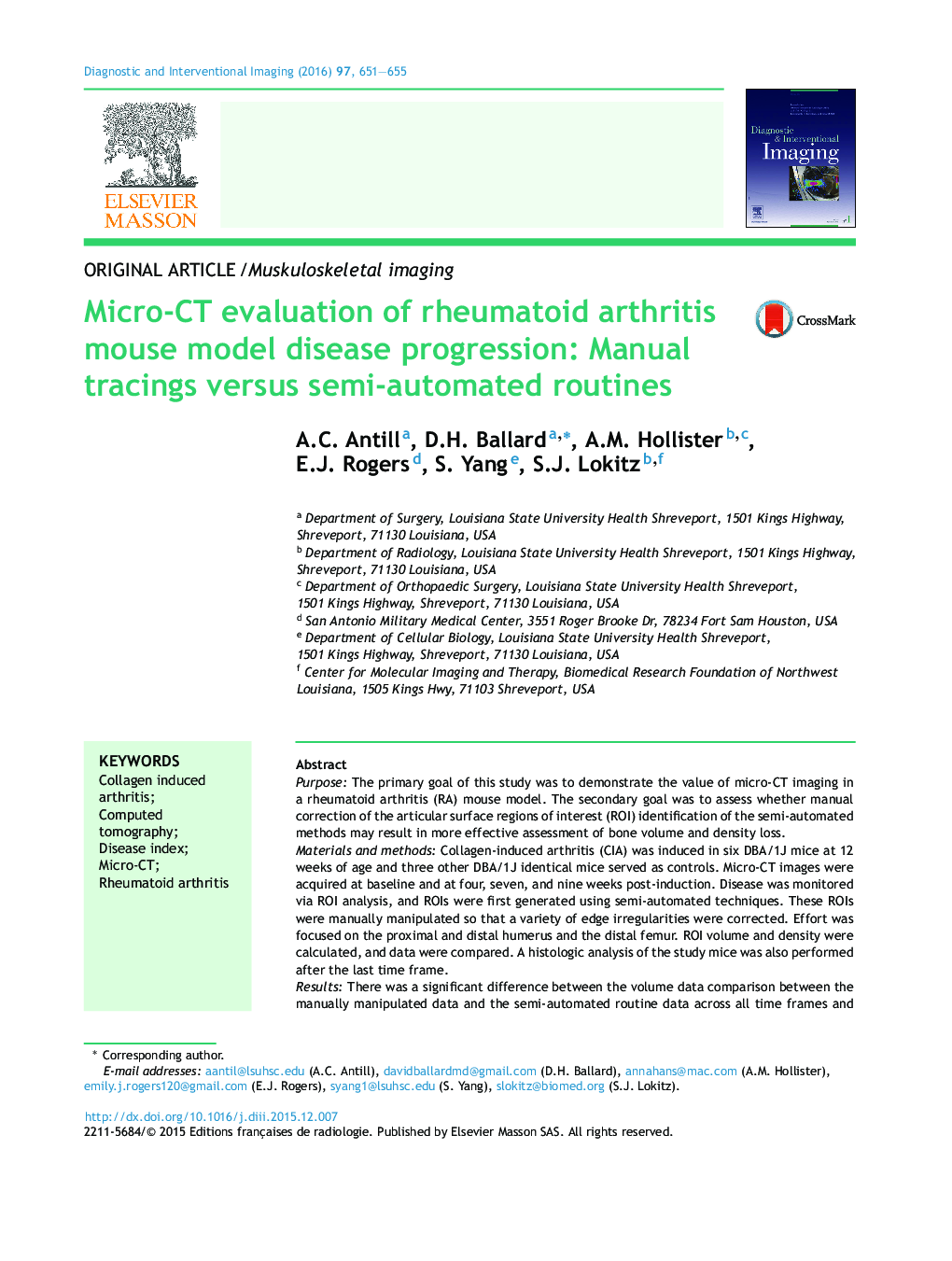| کد مقاله | کد نشریه | سال انتشار | مقاله انگلیسی | نسخه تمام متن |
|---|---|---|---|---|
| 2732641 | 1147520 | 2016 | 5 صفحه PDF | دانلود رایگان |
PurposeThe primary goal of this study was to demonstrate the value of micro-CT imaging in a rheumatoid arthritis (RA) mouse model. The secondary goal was to assess whether manual correction of the articular surface regions of interest (ROI) identification of the semi-automated methods may result in more effective assessment of bone volume and density loss.Materials and methodsCollagen-induced arthritis (CIA) was induced in six DBA/1J mice at 12 weeks of age and three other DBA/1J identical mice served as controls. Micro-CT images were acquired at baseline and at four, seven, and nine weeks post-induction. Disease was monitored via ROI analysis, and ROIs were first generated using semi-automated techniques. These ROIs were manually manipulated so that a variety of edge irregularities were corrected. Effort was focused on the proximal and distal humerus and the distal femur. ROI volume and density were calculated, and data were compared. A histologic analysis of the study mice was also performed after the last time frame.ResultsThere was a significant difference between the volume data comparison between the manually manipulated data and the semi-automated routine data across all time frames and across both humeri and femurs. There was no significant difference in densities calculated in Hounsfield units across any of the time frames, humeri or femurs, except for one time frame.ConclusionOur findings suggest that the manual correction technique of semi-automated data can be used to quantify and evaluate bone volume, density, and joint surface architecture changes in a RA mouse model.
Journal: Diagnostic and Interventional Imaging - Volume 97, Issue 6, June 2016, Pages 651–655
